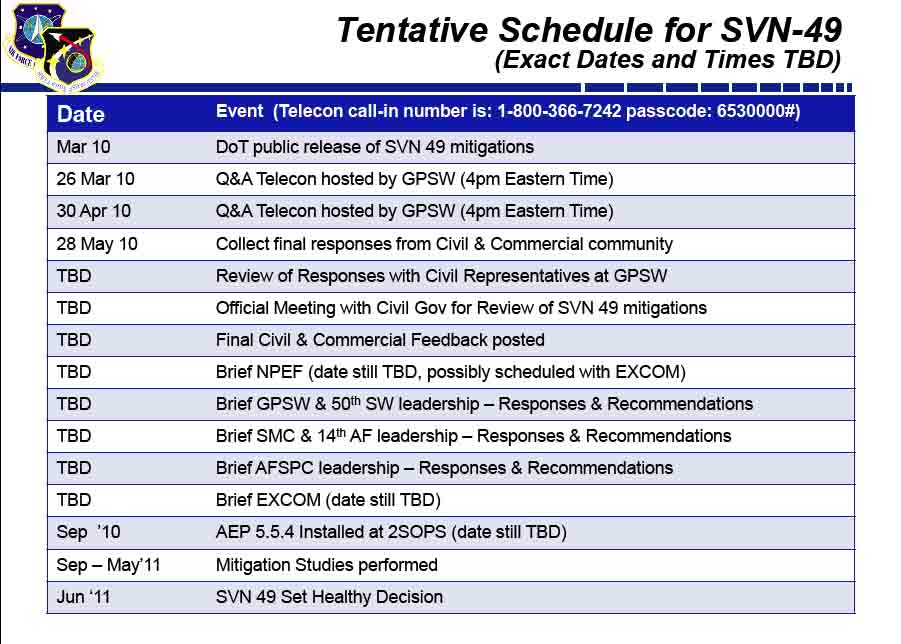For years, the U.S. Department of Transportation (DOT) has been exploring the technologies and systems necessary to provide positioning, navigation, and timing (PNT) services to complement the Global Positioning System (GPS) so that these critical services remain available even when GPS signals are disrupted. In the past few months, the department has ramped up these Complementary PNT (CPNT) efforts, from its issuance of a CPNT Action Plan in September to a related Request for Information (RFI) seeking industry input on CPNT technologies. What are these efforts, how are they going and why the sense of urgency now?
The Plan
The DOT’s CPNT Action Plan, issued this September, provides a comprehensive roadmap to ensure the safety, security, and efficiency of critical infrastructure in the face of potential GPS disruptions through the adoption of CPNT technologies.
Stakeholder engagement across the PNT enterprise, including providers of PNT services and critical infrastructure owners and operators, ranks high among the plan’s key strategies and actions. So does the development of CPNT solutions specifications and standards. The plan further includes a goal of establishing field trials and test ranges to evaluate the performance and resilience of domain-specific (e.g., maritime, rail, and surface applications) CPNT technologies, based on quantitative performance metrics.
The DOT also plans to act as the federal PNT services clearinghouse to provide real-time situational awareness, performance monitoring, and response capabilities, and as the government’s lead adopter and purchaser of PNT services to accelerate testing and market development in the private sector. The department appears to have fast-tracked this federal marketplace strategy with the issuance of an RFI to industry on CNPT tech.
The RFI
On September 11th, DOT’s Volpe Center issued a 15-day quick-turn RFI to industry seeking information about the “availability and interest in carrying out a small-scale deployment of high-level technology at a field test range to characterize the capabilities and limitations of such technologies to provide PNT information that meet critical infrastructure needs when GPS service is not available and/or degraded due environmental, unintentional, and/or intentional disruptions.” It then extended the deadline to October 10th.
The RFI, which specifically seeks to field test CPNT technology that stands at a Technology Readiness Level (TRL) of eight or beyond, signals the immediate need for a complete solution from core infrastructure to User Equipment (UE).
In an apparent effort to spur broader assimilation of CPNT technology, the RFI outlines a vision of three field test range models to nurture a collaborative environment between CPNT technology vendors and critical infrastructure consumers. It delineates a meticulous setup for examination at the selected Test Range Sites, where either the U.S. Government or designated operators will facilitate the CPNT technologies’ deployment.
To this end, the DOT seeks detailed commentary on test range deployment logistics, across a spectrum of scenarios (e.g., varying levels of urbanization, terrain diversity, meteorological conditions, and indoor/outdoor environments), potential user sectors, exemplar use-cases, as well as an analysis of the economic and safety dividends in alignment with various critical infrastructure sectors. It requires diagrams and achievable execution timelines for such field trial testing.
The DOT set the bar high. Companies replying to this RFI must meticulously outline the technical specifications of their CPNT technology, with a focus on accuracy, integrity, and resilience, especially under adverse GNSS conditions. They must also thoroughly explain their technology’s resilience against a range of signal threats, both intentional and unintentional, including jamming and spoofing.
Additionally, they must produce sufficient data on information assurance across the company’s supply-chain, operational security, system control and maintenance to illustrate robust security, consistent with the national cybersecurity framework.
The RFI places the coherence among system components and their efficacy in an operational environment high as a top priority. The technology must have also undergone a stringent testing and evaluation process, manifesting its designed functionality with precision.
This RFI underscores the DOT’s escalating endeavor to bolster the resilience of the nation’s critical infrastructure against disruptions to GPS. It reflects a growing awareness of the potential risks associated with GPS dependencies and represents an organized effort to mitigate them. But why the sense of urgency now?
The Timing
The problem of potential GNSS disruptions, whether due to natural phenomena, technical issues, or deliberate interference (e.g., jamming or spoofing) is not a new one. It has been well documented, for some time now, that the absence or degradation of GNSS signals can have significant implications for safety, security, and economic activities across the defense enterprise and civil society.
The pressing need for resilient PNT solutions that can function if GNSS gets knocked off line seems to have a direct correlation to current events – in particular, the prevalence of GNSS jamming in both the Hamas-Israel and Russia-Ukraine conflicts. Interfering with GNSS signals, itself a form of electronic warfare (EW), enables combatants to undermine a wide range of adversary capabilities, from simple navigation to advanced weapon systems that rely on GNSS for targeting. The repercussions of these tactics, however, have transcended the battlefield. They’ve extended into the digital infrastructure and electromagnetic spectrum upon which civilian infrastructure relies for precise PNT data.
In the theater of conflict between Israel and Hamas, the strategic use of GNSS jamming has emerged as a significant player. As the hostilities began, Hamas employed GNSS jamming to impede Israeli communication networks. To neutralize aerial threats from drones, shield against airborne assaults and thwart Hamas’s ground offensive and missile launches, Israel intensified its own use of GNSS jamming. This jamming had a spillover effect on civil aviation. In one case, a potent GNSS jammer deployed at an airforce base had reverberations on regional civil aviation.
Similarly, GNSS jamming has been a significant issue in the Russia-Ukraine conflict. While Russia’s military invasion began in February 2021, it has reportedly been engaged in GNSS jamming activities in the region since at least 2014. Over the past several months, these activities have ramped up to a reported 15 regions. Among other concerns, this could cause significant navigational challenges for civil aircraft.
These persistent GNSS jamming activities reflect a broader strategy of EW as a critical component of modern military operations. The problem is that GNSS is a dual-use technology. Many civilian sectors also depend heavily on GNSS. Its disruption can have wide-ranging implications on both the military and civilian sectors alike. For the U.S. government, these electronic skirmishes have underscored the vulnerability of both mil-civ targets to GNSS disruptions. They appear to have propelled the DOT’s current quest for robust CPNT systems capable of withstanding electronic threats. So, who is answering the call?
The Contenders
The specific responses to the US DOT RFI on CPNT at TRL 8 remain unavailable to the public. However, several companies which have engaged in demonstrations and evaluations concerning PNT technologies, both in the US and in Europe, have likely responded.
Earlier this year, the European Joint Research Centre conducted a test campaign to evaluate various Alternative Position, Navigation and Timing (A-PNT) platforms that could provide precise PNT without the use of navigation satellites. The rigorous assessment spanned over eight months. It involved evaluations in both indoor and outdoor environments at both the JRC premises and other locations and encompassed time transfer over the air, fiber, and wired channels. The campaign identified seven companies as having mature technologies ready to take on CPNT: OPNT, Seven Solutions SL, SCPTime, GMV Aerospace and Defence SAU, Satelles Inc., Locata Corporation Pty Ltd and NextNav.
Some of these same companies had also previously participated in U.S. technology demonstrations, specifically Volpe Center’s 2020 demos. Despite the showing of these companies in 2020, in its 400+ page final report to Congress on the matter in 2021, DOT opined that “none of the systems can universally backup the positioning and navigations capabilities provided by GPS and its augmentations.”
Perhaps in the three years between the Volpe and JRC demos, CPNT technology has leap-frogged forward. Regardless, there’s a good chance that at least a handful of the companies that showcased their tech in both the U.S. and Europe have thrown their hats in the ring to respond to the DOT’s most recent call for CPNT tech.
In the meantime, electronic threats continue to surge. Let’s hope global PNT authorities pick some winners to shore up PNT…before we get jammed up.






